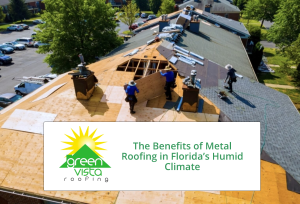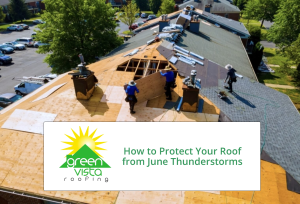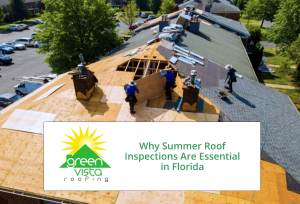Appreciating the Intricacies of Roof Components
Undoubtedly, one of the primary protective barriers between nature’s elements and your beloved home is the roof over your head. At Green Vista Roofing, we believe that understanding the basic roof components is integral to comprehending their function, importance, and the roles they play in overall home maintenance.
A well-built roof is much more than the shingles or tiles that you see when you look up from the street level. From insulation to flashing, the intricacies of a well-constructed roof go beyond the surface. This article will explore these components systematically and elaborately, shedding light on their individual roles, functions, and importance.
The Functionally Protective Outer Layer
The roof’s outermost portion, often visible from ground level, provides the first line of defense against the environment. This layer could consist of shingles, shakes, tiles, or metal. Regardless of the material, this exterior portion serves to divert water away from the home and protect the inner roof layers from UV exposure and other outdoor elements. These components are engineered to withstand extreme weather conditions and provide the aesthetic appeal that characterizes your home’s external appearance.
The Crucial Role of Underlayment
Situated beneath the external layer, the underlayment acts as a secondary waterproofing and weatherproofing layer. Consisting of felts, synthetic materials, or rubberized asphalt, underlayment shields the roof deck from wind-driven rain and snow that might seep under the external layer. This crucial component ensures excess water does not infiltrate your home, leading to costly damages and potential health hazards.
Rafters and Trusses: The Structural Backbone
Rafters and trusses are the structural backbones that support the entire roof. Typically made from sturdy wooden beams, these components form the skeleton of the roof, upon which other layers are secured. They exist to bear the weight of all other roof components and any exterior forces such as snow loads. The ultimate configuration and design of these structural elements largely determine the strength and style of the roof.
Insulation: An Energy Efficiency Game-Changer
Attic or roof insulation is an efficient energy-saving component that helps maintain an optimal indoor temperature throughout the year. By reducing heat transfer between the indoors and outdoors, insulation decreases energy usage, subsequently decreasing your heating and cooling costs.
The Integral Role of Roof Flashing
Roof flashing, often made from galvanized steel, copper or aluminum, is designed to direct water away from critical areas of the roof such as intersections and protrusions. It is commonly installed around areas like chimneys, skylights, and vents, effectively preventing water from seeping into your home’s interior.
Ventilation: Balancing Indoor Air Quality
Proper roof ventilation is necessary to maintain a balanced, healthy indoor air quality and extend the life of your roofing system. It helps moderate temperature and humidity levels in attic spaces, preventing the buildup of moisture that can lead to mold growth and structural damage over time.
The Underappreciated Decking
Underneath your roofing system sits the decking, also known as sheathing. Decking provides a solid base for the application of other roof components, supporting everything from the shingles above to the rafters below. Typically made from plywood or OSB, proper decking is critical in determining the overall structural integrity of the roofing system.
Gutters and Downspouts: Ensuring Proper Drainage
Gutters and downspouts complete the roof components chart, serving as essential drainage systems. They channel rainwater and snowmelt away from your home and its foundation, protecting your property from water damage while maintaining your home’s aesthetic appeal.
The Sum of All Roofing Components
In conclusion, it is clear that a roof is more than just an aesthetic covering for your home. It is a complex ensemble of roof components working harmoniously to ensure your home remains safe, comfortable, and protected from the elements.
At Green Vista Roofing, we stress the importance of understanding these components and their significance in the overall health and longevity of your roof system. Ultimately, regular maintenance and timely professional inspections are key to ensuring every aspect of your roof performs its role optimally for your home’s enduring safety and comfort.







